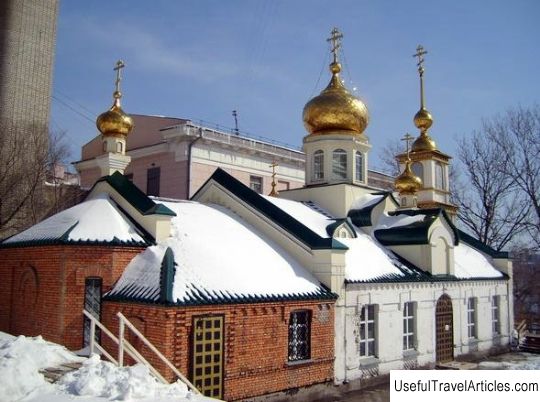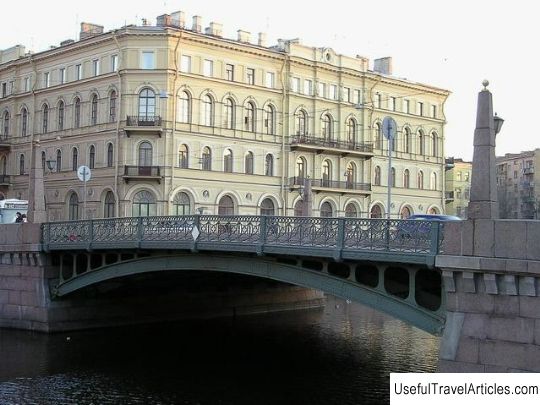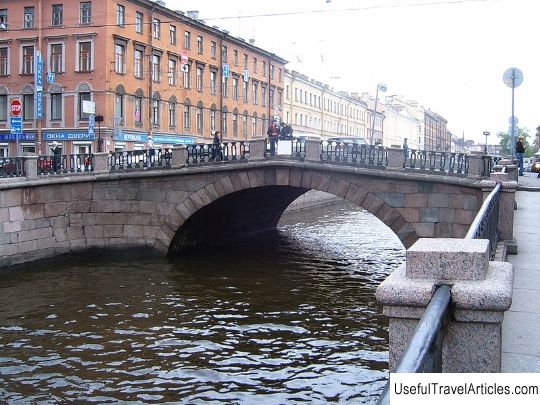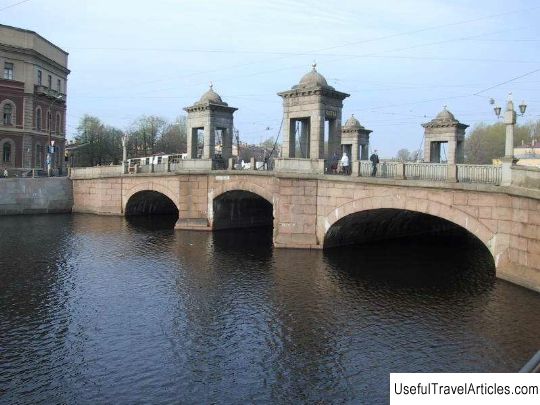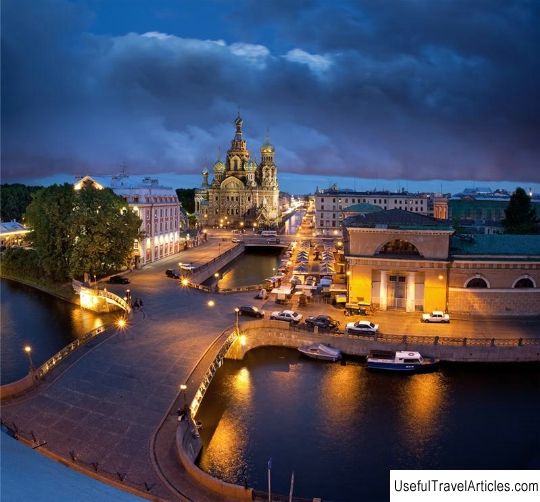Obukhovsky bridge description and photo - Russia - Saint Petersburg: Saint Petersburg
Rating: 8,5/10 (4354 votes) 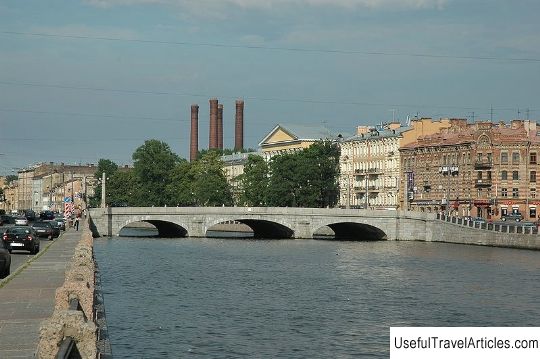
Obukhovsky bridge description and photos - Russia - Saint Petersburg: Saint Petersburg. Detailed information about the attraction. Description, photos and a map showing the nearest significant objects. Photo and descriptionOne of the oldest bridges in St. Petersburg is the Obukhovsky bridge across the Fontanka river along Moskovsky prospect (Saarskaya prospect, formerly Tsarskoselsky prospect). The name of this bridge gave rise to the name of Obukhovsky Avenue, which in the 19th century was part of Sennaya Square. It is interesting that in 1837 F.M. lived in a hotel located near the Obukhovsky bridge. Dostoevsky, who came to enter an engineering school. Almost until the middle of the 18th century, this bridge had no official name. The name "Obukhovsky" or "Obukhov" arose among the townspeople by the name of the person who built it - Obukhov. The commission in charge of buildings in St. Petersburg, officially in the documents began to call the bridge "Obukhovsky" in 1738. However, it did not really take root, to this day, Petersburgers call the bridge Obukhov in memory of the construction contractor. On the site of the modern Moskovsky Prospekt, the first wooden bridge was thrown across the Fontanka in 1717. Across the bridge, a full-width opening (about 70 cm) was provided specifically for the masts of ships passing along the river. During the day, it was covered with boards. The crossing was rebuilt in 1738. In 1785, a stone bridge was erected here, instead of the deteriorated one. It was built according to one of seven standard designs of 3-span bridges across the Fontanka. There are several official sources that indicate an engineer from France Zh-R as the architect of the Obukhov bridge. Perrone. True, there is no documentary evidence for this. The stone bridge was three-span with side arches and a drawbridge. Above the pillars of the bridge in the river stood open granite towers decorated with domes. They contained the mechanical components of the drawbridge. In 1865, the wooden drawbridge was replaced with a brick vault, and the granite towers were dismantled. The reconstruction project was developed by engineer Mikhailov. The design remained practically the same - the bridge was three-span. The stone vaults above the spans reached a height of 9 to 14 meters. The overlapping of the side spans was granite in the form of box-shaped vaults with a height of 2.30 m. The thickness of the vaults was 85 cm, at the heels it varied from 95 to 120 centimeters. The middle span was built of bricks and faced with granite. The boom of ascent of the middle span was 1.52 m. Coastal and river supports and abutments were stone with granite facing. The railing was metal in the form of rods the rings above and below were a kind of decoration. The longitudinal axis of the Obukhovsky bridge relative to the edges of the supports was 67 °. In the 20th century, by the end of the 30s, the bridge had to be rebuilt, because of its width there were problems with traffic along Mezhdunarodny prospect. The width of the bridge was just over 16 meters, and the avenue was over 30 meters. In addition, subsidence began in the brickwork of the central span. The cracks in the seams reached 25 mm. The authors of the project of the new Obukhovsky bridge were the employees of the bridges operation office, engineers L.A. Noskov and V.V. Demchenko, which began work in 1937. The work lasted for 2 years, and in 1939 the bridge was opened. The Obukhovsky bridge after the reconstruction remained 3-span. Double-hinged parabolic vaults - solid. The exterior is made of granite. The longitudinal axis of the bridge in relation to the faces of the supports is rotated by 60 °. The width of the Obukhovsky bridge between the railings is 30.88 m, the size of the roadway is 24.6 m, the sidewalk is 3 m. On wooden piles (there are 1,600 of them, the length of each is 11 meters), river stops and coastal abutments are made of reinforced concrete. The sidewalks are covered with granite, the carriageway is covered with asphalt concrete. There used to be a line of the Leningrad gas pipeline under the upper sidewalk. In 1950 it exploded and part of the granite slabs was destroyed. After this incident, gas pipelines on all bridges of the city were closed. The railings are solid parapets made of granite. On the abutments, there are granite obelisks on which glass lanterns are installed. Obukhovsky bridge in St. Petersburg is included in the list of cultural heritage of the Russian Federation.       We also recommend reading Dolphinarium description and photo - Russia - St. Petersburg: St. Petersburg Topic: Obukhovsky bridge description and photo - Russia - Saint Petersburg: Saint Petersburg. |
